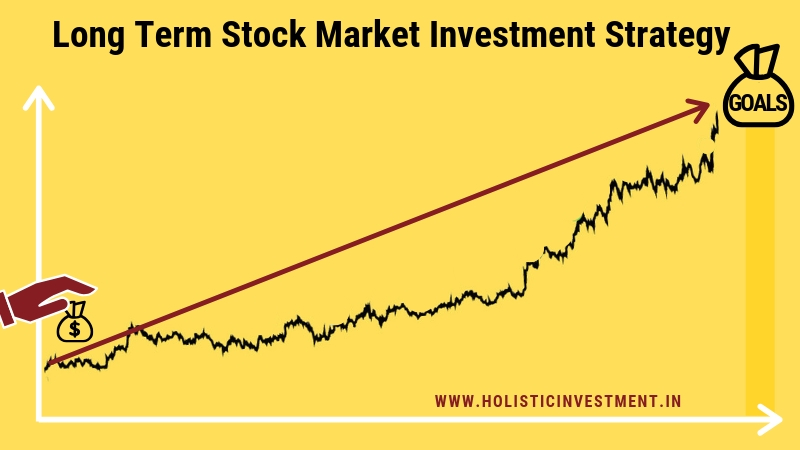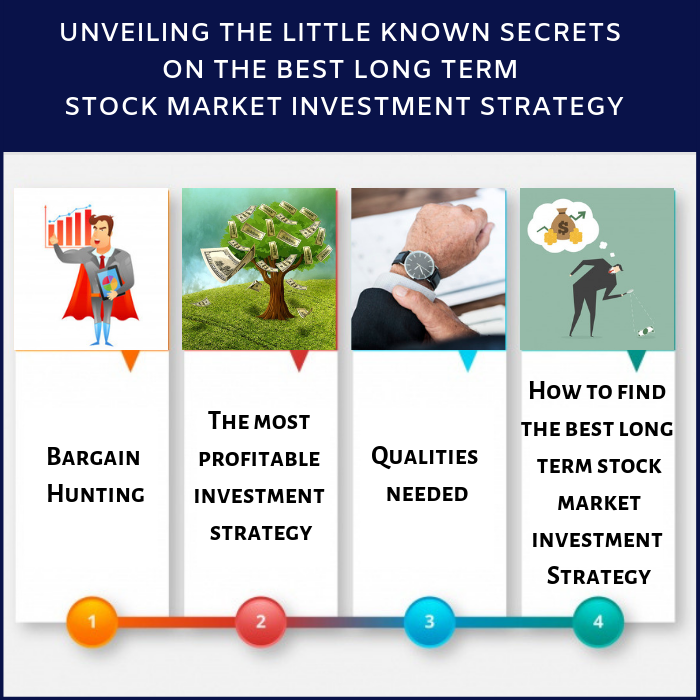Delve into the realm of long-term stock investment strategies where wisdom meets opportunity. Uncover the secrets to lasting financial growth and success in the stock market.
Discover the fundamental principles and techniques that seasoned investors use to navigate the complexities of long-term stock investments.
Introduction to Long-Term Stock Investment Strategies

Long-term stock investment strategies involve buying and holding stocks for an extended period, typically years, with the goal of building wealth over time. This approach focuses on the fundamental strength of a company and its potential for growth, rather than short-term market fluctuations.
Having a long-term approach in stock investments is crucial for investors looking to achieve sustainable and consistent returns. It allows investors to ride out market volatility, benefit from compounding returns, and reduce the impact of short-term market noise on their investment decisions.
Examples of Successful Long-Term Stock Investment Strategies
- Investing in well-established companies with a history of strong performance and consistent growth, such as Apple, Amazon, or Coca-Cola.
- Diversifying your portfolio across different sectors and industries to reduce risk and take advantage of opportunities in various market conditions.
- Reinvesting dividends to accelerate wealth accumulation over time and benefit from the power of compounding.
- Staying disciplined and patient during market downturns, avoiding emotional reactions to short-term fluctuations, and focusing on the long-term prospects of your investments.
Fundamental Analysis in Long-Term Stock Investment
Fundamental analysis is a method used by investors to evaluate the intrinsic value of a stock based on various factors related to the company's financial health, management team, industry trends, and overall economic conditions. This analysis focuses on assessing the company's core financial data to determine whether the stock is undervalued or overvalued in the market.
Key Metrics and Factors in Fundamental Analysis
Fundamental analysis considers several key metrics and factors, including:
- Revenue and Earnings: Analyzing the company's revenue and earnings growth trends over time to assess its profitability.
- Balance Sheet: Examining the company's assets, liabilities, and equity to evaluate its financial stability and leverage.
- Cash Flow: Reviewing the company's cash flow statement to understand its ability to generate cash and meet financial obligations.
- Profit Margins: Assessing the company's profit margins to determine its efficiency in generating profits from sales.
- Market Share: Analyzing the company's market share and competitive position within the industry.
By analyzing these fundamental factors, investors can gain insights into the long-term growth potential and financial health of a company, helping them make informed investment decisions.
Comparison with Other Stock Analysis Methods
Fundamental analysis differs from other stock analysis methods such as technical analysis and sentiment analysis. While fundamental analysis focuses on evaluating a company's intrinsic value based on financial data, technical analysis relies on historical price movements and trading volumes to predict future stock prices.
On the other hand, sentiment analysis involves assessing market sentiment and investor behavior to gauge market trends and stock movements.
While each method has its own merits, fundamental analysis is widely used by long-term investors seeking to build a diversified portfolio of fundamentally strong companies with sustainable growth potential.
Technical Analysis in Long-Term Stock Investment
Technical analysis plays a crucial role in long-term stock investments by analyzing historical price trends and trading volumes to forecast future price movements.
Common Technical Indicators for Long-Term Investment Decisions
Technical analysts use a variety of indicators to make informed decisions on long-term investments. Some common technical indicators include:
- Moving Averages: This indicator smooths out price data to identify trends over a specific period, such as 50-day or 200-day moving averages.
- Relative Strength Index (RSI): RSI measures the speed and change of price movements to determine overbought or oversold conditions in a stock.
- MACD (Moving Average Convergence Divergence): MACD helps identify changes in a stock's trend by comparing moving averages.
- Bollinger Bands: These bands show the volatility and potential price levels of a stock based on standard deviations from a moving average.
Complementing Fundamental Analysis with Technical Analysis
While fundamental analysis focuses on a company's financial health and intrinsic value, technical analysis provides insights into market sentiment and price patterns. By combining both approaches, investors can make more well-rounded decisions on long-term investments.
Diversification Strategies for Long-Term Stock Investment
Diversification is a risk management strategy that involves spreading your investments across different assets to reduce the overall risk of your portfolio. In the context of long-term stock investment, diversification helps minimize the impact of market volatility on your investments and potentially enhances your returns over time.
Benefits of Diversification in a Stock Portfolio
Diversification in a stock portfolio can be achieved through various strategies, such as:
- Investing in different sectors: By spreading your investments across various sectors of the economy, you reduce the risk of being heavily impacted by a downturn in any single sector.
- Allocating across asset classes: Including a mix of stocks, bonds, and other assets in your portfolio can help balance risk and return potential.
- International diversification: Investing in companies from different countries can provide exposure to a wider range of economic conditions and reduce geopolitical risks.
Real-World Examples of Successful Diversification Strategies
One notable example of successful diversification is the endowment funds of universities like Harvard and Yale. These institutions have achieved long-term growth by diversifying their portfolios across various asset classes, including stocks, bonds, real estate, and alternative investments.
Harvard's endowment fund, for instance, has historically allocated a significant portion of its assets to alternative investments like private equity and hedge funds, which has helped them achieve consistent returns over time.
Risk Management Techniques for Long-Term Stock Investment

When it comes to long-term stock investment, risk management plays a crucial role in safeguarding your portfolio from potential losses. By implementing effective risk management strategies, investors can better protect their investments and achieve their financial goals in the long run.
Diversification Strategy
Diversification is a key risk management technique that involves spreading your investments across different asset classes, industries, and geographic regions. By diversifying your portfolio, you can reduce the impact of any single investment performing poorly. This strategy helps minimize overall risk and volatility, making your portfolio more resilient to market fluctuations.
Stop-Loss Orders
Stop-loss orders are another important risk management tool for long-term investors. By setting a predetermined price at which you will sell a stock, you can protect yourself from significant losses if the market moves against you. This automatic selling mechanism ensures that you exit a position before the losses become too large, helping you preserve capital and minimize risk.
Asset Allocation
Asset allocation is the process of dividing your investment portfolio among different asset classes, such as stocks, bonds, and cash. By strategically allocating your assets based on your risk tolerance and investment goals, you can create a well-balanced portfolio that can weather market downturns.
This approach helps mitigate risk by spreading your investments across a variety of assets with different risk-return profiles.
Dividend Investing as a Long-Term Stock Investment Strategy
Dividend investing is a strategy where investors focus on purchasing stocks that pay out regular dividends. These dividends are a portion of the company's profits distributed to shareholders. This approach is popular among long-term investors looking for a steady income stream along with potential capital appreciation.
Benefits of Dividend Investing for Long-Term Investors
- Steady Income: Dividends provide a reliable source of income, especially during market downturns.
- Lower Volatility: Dividend-paying stocks tend to be less volatile compared to growth stocks, offering stability to a long-term portfolio.
- Compounding Returns: Reinvesting dividends can accelerate the growth of an investment portfolio over time through the power of compounding.
Contribution of Dividends to Long-Term Portfolio Growth
- Income Generation: Dividends can supplement overall returns and provide a source of passive income for investors.
- Reinvestment Opportunities: Reinvesting dividends allows investors to purchase more shares, leading to potential growth in the investment portfolio.
- Long-Term Wealth Building: Over time, the compounding effect of reinvested dividends can significantly increase the value of an investment portfolio.
Successful Dividend Investing Strategies
- Dividend Aristocrats: Investing in companies with a history of consistently increasing dividends over many years.
- Dividend Growth Stocks: Choosing stocks of companies that have a solid track record of growing dividends along with stock price appreciation.
- High Dividend Yield Stocks: Selecting stocks with high dividend yields for immediate income generation.
Last Point
In conclusion, long-term stock investment strategies hold the key to building a robust and sustainable financial future. By embracing these strategies, investors can secure their wealth and achieve their long-term goals with confidence.
Essential FAQs
How important is diversification in long-term stock investments?
Diversification is crucial as it helps spread risk across various assets, reducing the impact of a single investment's performance on the overall portfolio.
What role do dividends play in long-term stock investment strategies?
Dividends provide a steady income stream for investors and can contribute significantly to the total returns of a long-term investment portfolio.
Why is risk management essential for long-term stock investments?
Effective risk management helps protect investments from unpredictable market fluctuations and ensures a more secure financial future.



